A week and a half ago, I wrote about the set props for Slave Shack, a show I prop-mastered at the Algonquin Theatre. Now that the show has closed, I can talk about the hand props (the hand props give away several key plot points, which is why I held off until the show closed). There were several interesting challenges with the hand props for Slave Shack
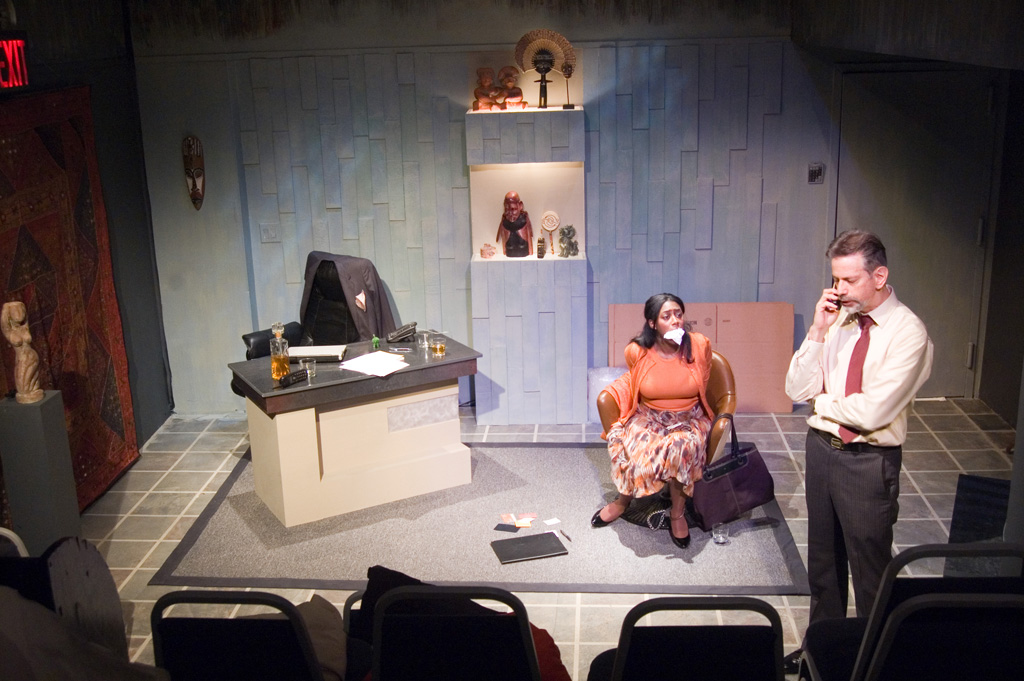
Handcuffs
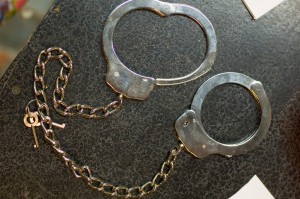
The “handcuffs” actually needed to be leg-cuffs, as you can see in the first photograph. They also needed to be trick cuffs, with the ability to come apart without a key at any time. We couldn’t find any leg cuffs with that ability, so we had to invent them. The first thing we tried was grinding down the teeth; this would allow Candice LaGia Lenoir, the actress who played Janice, to pull the handcuffs apart as easily as they could be pushed together.
During the play, however, Janice jumps out of her seat a couple of times. When she did this, the handcuffs would pop open. My first idea was to rig some sort of latch on the handcuffs, which could hold the handcuff jaws together. This created more problems than it solved, as Candice needed to undo the handcuffs in the dark and get off stage at the end of Act One. It introduced a whole lot of fumbling whenever the handcuffs needed to come on or off.
I got another set of cuffs which still had un-ground teeth. I put the key in the hole and covered the slot so the key remained inside permanently. I then cut the end of the key off and replaced it with a less visible lever to operate it. Basically, I turned the leg-cuffs into a set of trick cuffs. This seemed to work for the most part.
Chair
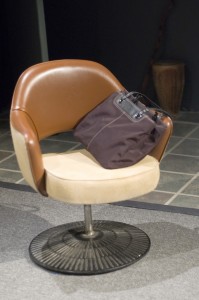
The play called for a large sofa in the middle of the office. Jack handcuffs Janice’s leg to one of the sofa’s legs. There is a line about the sofa being so heavy “it took five guys to carry it up here.” The implication is that Janice cannot simply lift the sofa and slide the cuff out from underneath to free herself.
Unfortunately, the stage at the Algonquin is 12′ by 15′, and a sofa of any significant size would fill the entire set. Natalie (the set designer, and my wife) designed a swivel chair with a heavy pedestal as pictured above. Unfortunately, such a thing does not exist; the only chairs close are designer mid-century pieces which cost thousands of dollars.
We found the top part of the chair on Craigslist, and was able to get it delivered. It originally had a rolling base. I removed that and replaced it with the base you see above, which was taken from an outdoor pedestal table. It was extremely heavy, which was good, since we needed to sell the idea that Janice could not simply sneak off with the entire chair, and also so the chair would not tip over during the violent scufflings which occurred throughout the performance.
Monkey
One of the major plot points of Slave Shack involves a racist monkey cartoon which appeared on a company brochure to depict Africa. Jack Blake, the main character was held responsible for it and forced to retire. During the play, Warren, his underling, gives Jack a going-away present – a stuffed toy which resembles the racist monkey cartoon described earlier. Debra Whitfield, the director, wanted something creepy-looking, like the cymbal monkey toys from the 1950s.
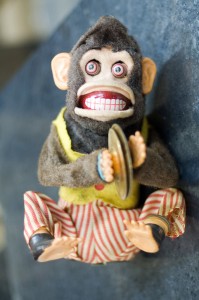
I found a significantly creepy version of this toy on eBay; it was fairly cheap, as the moving parts were broken. I removed the clothes and added a grass skirt, feather headdress, a bone in its nose, and some decor around his neck.
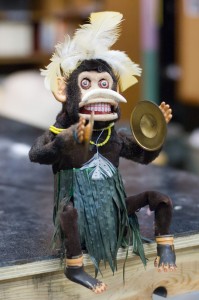
I had to add some additional fur as removing the clothes revealed the metal skeleton underneath.
Breakable Statue
You may recall my earlier post on how to make a breakable glass. When we tested it in the space, it was still too dangerous. The space is so small that any breakable item had the potential of throwing shards into the audience. The space was also completely enclosed, so no matter how you blocked the action, the pieces would eventually ricochet off a wall and head toward the audience.
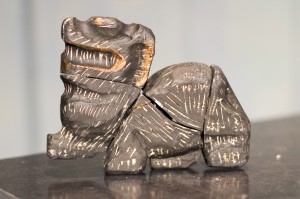
The only safe alternative on our budget (short of cutting the moment) was a wooden statue which could be pre-broken and reassembled with hot glue every night. Once again, Natalie decided to carve one herself rather than buy one. Though more labor-intensive, this gave us one distinct advantage. We cut the block of wood into five pieces and reassembled it with hot glue before carving it. This gave us nearly invisible break lines. If we cut a statue that had already been carved, the kerf, or thickness of the cutting blade, would have kept the seams from lining up completely.






i had the same problem with a breakable statue over a long run of “the caretaker” but it had to porcelian.So i found that if you add Bicarbonate of soda to plaster it bubbles and softens just enough that when smashed it powders rather than break into shards. the only problem was that it had to be a rubber mold and one had to be careful demolding.
great blog thanks
After the show a friend gave me another tip. Add vermiculite to plaster for a similar effect. Seems there are quite a lot of options in this realm. Our main problem with the small space was that we needed to control the breakage. Even if the statue broke into powder, the actors didn’t have room to avoid scuffling in the mess. Our little statue broke into 5 chunks that could be kicked into the corner. I’m not sure this is the best solution possible, but it worked for us and we had less than 24 hours to solve it!